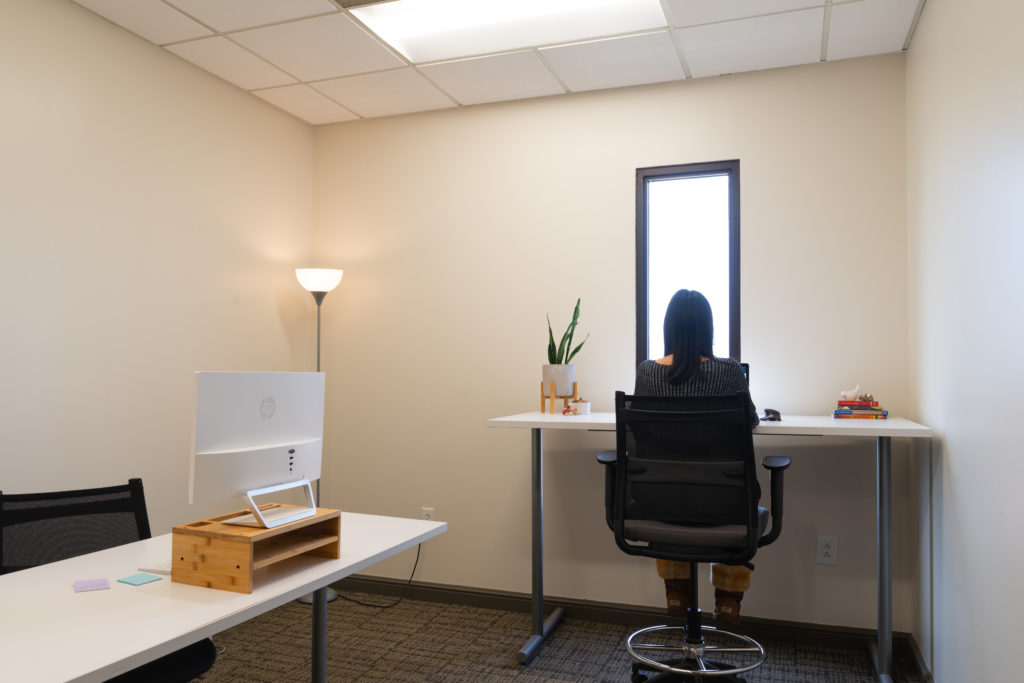Are we talking about work-life balance in a healthy way anymore?
One camp claims that Gen Z workers, in pursuit of work-life balance, are abandoning the career oriented mentality, ditching the prescribed “work your way up in the company until you retire” to either pursue their personal passion or redefine their self worth outside of their job.1 In contrast, others say that those who refuse to work their way up in a career, in order to attain work-life balance, are mediocre and dispassionate.2
Both sides mention the pursuit of work-life balance, though with different viewpoints, which begs the question: what does the term work-life balance truly entail?
Over the past year, people have quit their jobs at an enormous rate to land a better job. This past November alone, 4.5 million Americans quit their job. Reasons for the workplace exodus include a toxic work culture, unrealistic expectations from managers and bosses, and poor treatment of employees. These reasons pertain to a lack of both respect and sense of fulfillment in the workplace.
What is life, if not the pursuit of feeling fulfilled? Of course, that picture of fulfillment looks different for everyone. And it doesn’t necessarily have to come from our jobs or lives in equal amounts. So what if we looked at ways for workers to feel fulfilled at their workplace aside from the work itself? What if that helped us achieve true work-life balance?

When you look at a balance scale there are two sides.
Weight placed on one side of the scale will raise the other side, and vice versa. When you place an equal amount of weight on both sides, the scales are balanced. This occurs both with a lot of weight and a little weight.
How does this relate to work-life balance?
Some workers may place less weight on feeling fulfilled at their jobs, while other workers may place more weight on feeling fulfilled by their career. No matter the amount of weight placed on a job or career, it is possible for any worker to remain in balance at work. The same principle can apply to feeling fulfilled in one’s life outside their job.
So, instead of seeing work-life balance as a single balance scale, let’s say there are two individual balance scales: a work balance scale and a life balance scale.
To achieve balance on either balance scale (i.e. a sense of fulfillment), one side—the effort side—matches the amount of weight as the other—the reward side. When the amount of effort matches the amount of reward, one achieves fulfillment, or balance.
When both scales are balanced, one achieves work-life balance.
This idea popped up after reading two interesting pieces on work-life balance: a Fortune article written by an urban design professional juxtaposed with a commentative piece from the Galaxy Brain blog.
The opening paragraph from the Fortune article reads: “I recently fired my first-ever direct report. Although he was low-energy, uninspired, and an awful speller, what ultimately led him to the ax was his insistence on boundaries.”2
Based on the author’s (likely emotionally-charged) description of her former employee, I presume the employee’s attitude reflected how much fulfillment he needed from his work. He clearly established his relationship with his job, indicating that he did not want to invest any more time or energy than was required; his punctual timecard reflected so. However, the reader may gather that by establishing boundaries, he did not meet his boss’s expectation to give 110%.
For sake of argument, let’s assume that the moment the article writer fired her direct report was not the first time she aired her grievances to him about not using spell check or not working overtime.
Let’s also assume that the fired employee had no desire to quit his job, accomplished his tasks (grievances aside), and felt fulfilled in his personal life. If this was the case, he had work-life balance. He put in the amount he wanted to get back, and (before he was fired) he received that amount back.
His superior, on the other hand, strived to achieve more fulfillment from her work, therefore doing more work. She could also happily juggle her personal life and professional life while working more. In her case, she had work-life balance.
However, since she expected more effort from her direct report than what he gave her, there was an imbalance that led to his termination. Since this involves two people at a workplace, I’d argue this situation is a workplace imbalance.

Instead of discussing reasons for firing people, let’s dive into reasons more people are quitting their jobs in a huff. Since quitting is a personal decision, we will only look at one’s personal work-life balance.
While achieving work-life balance, one can choose how much of their life they want to bring to work.
In the example from the Fortune article, both workers achieved work-life balance in their own right, though their work ethic widely differed.
One experiences personal work-life imbalance when workers’ expectations of fulfillment, either from personal or work life, are unfulfilled. When a worker’s job demands more than they are willing to give, or the job demands more than what it gives back to the worker, a work imbalance occurs. As a result, workers quit their jobs in droves in the hopes of finding a job that is balanced.
This is where the Galaxy Brain commentary enters the scene, which, in contrast to the Fortune article, supports abandoning the prescribed career ideology in the search of finding fulfillment at work, however that may look.1
With so many job options, self-employment included, why would someone stay at a job that doesn’t give them a sense of fulfillment, given the choice?
Rather than completely separating work and life to achieve balance, the article notes that a majority of workers seek “to work for places that see them as three-dimensional human beings and that actually invest in them and their futures without expecting workers to sacrifice everything.”
All human beings have their personal quirks and preferences; they also have their own idea of how they’d like their future to look, which may not be identical to their boss’s or coworker’s idea.
Additionally, one’s circumstances in life may determine how much effort they want to invest in their work. As a coworking space with a diverse community of businesses, we at Center 615 know all too well how different one persons’s work and life can be from the next.
These differences from one worker to the next indicate that work-life balance will look different for everyone. It is also possible for someone’s ideal work-life balance to look different from one year to the next as lives and responsibilities change.
Since worker autonomy is ubiquitous these days, my advice to those who fear their employees potentially leaving is to ask yourself:
Do you see your employees? Do you treat them as valuable beings? Have you asked them if they feel like their work matters? Do you know what kind of environment you create at the workplace?
Similar to autonomy, achieving work-life balance is solely up to the individual. No one can give another person work-life balance, but they can help them work toward achieving it.
The key, then, to help one’s employees achieve work-life balance is to get to know them and their goals.
First, help them achieve work balance by asking the questions above, and then listen to how much of their life they want to bring to work. Having these conversations, I propose, will go a long way in preventing more workers from quitting their jobs due to unhappiness and dissatisfaction.
To quote a Galaxy Brain reader: “most of us don’t mind hard work and putting in the necessary time — when we are respected, valued, communicated with honestly, and paid right.”
That, to me, sounds like an equal amount of effort and reward at work. That is balance.
To discover how we at Center 615 strive for true work-life balance with our community of businesses, schedule your tour today!
References:
- Warzel, Charlie. “What If People Don’t Want ‘A Career’?” Galaxy Brain, Substack, 30 Aug. 2021, https://warzel.substack.com/p/what-if-people-dont-want-a-career
- Peterson, Gabrielle. “Want to Work 9–5? Good Luck Building a Career.” Fortune, 17 Aug. 2021, https://fortune.com/2021/08/17/work-life-balance-9-to-5-jobs-career-building/




